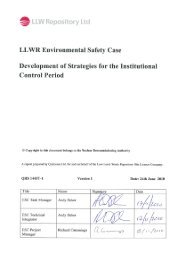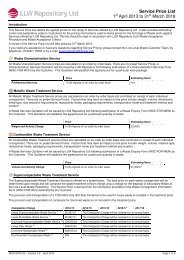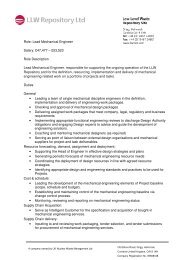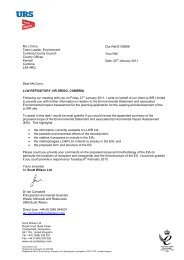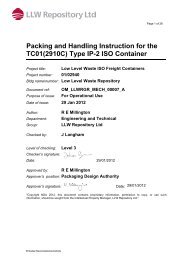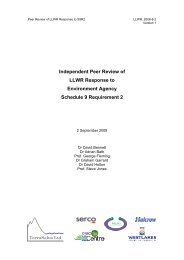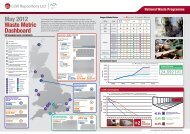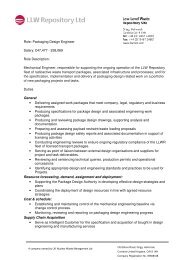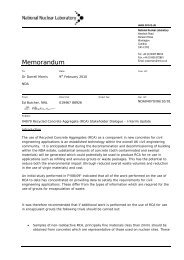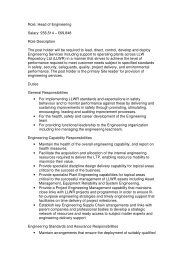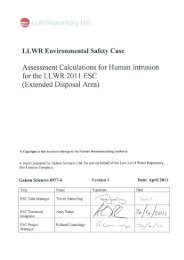Halcrow, Coastal Studies Forward Programme Data Compilation ...
Halcrow, Coastal Studies Forward Programme Data Compilation ...
Halcrow, Coastal Studies Forward Programme Data Compilation ...
You also want an ePaper? Increase the reach of your titles
YUMPU automatically turns print PDFs into web optimized ePapers that Google loves.
“The results of this study support the findings of the Shoreline ManagementPlan (Bullen Consultants, 1998a,b) that rates of erosion along the coastlinehistorically have been between 0.5 to 1.0 m per year. A detailed analysis of theDrigg frontage estimated local erosion rates to be approximately 0.64m per year(based on historical map analysis between 1898 and 1997). This value has beenused subsequently (e.g. the LLWR 2002 PCRSA, BNFL 2002a,b) to help assesslikely rates of coastal retreat… the assessments of coastal evolution and thepredictions are based on very limited data and have an unquantifiableuncertainty. For this reason, it would be unwise at the present time to basedecisions on the long-term viability of the site on the estimates provided.”The recommendations made in the 2001 report were integrated into the secondrevision of the forward programme for BNFL (<strong>Halcrow</strong> 2002a). The forwardprogramme of work has since been implemented over the period 2001 to present.The specific objectives and results of the coastal monitoring and assessment workare provided in the following sections.A key element of the coastal monitoring programme has been the collection ofaccurate and resolute shoreline data to measure coastal change with a high degreeof confidence. The results of analysis and modelling of these data, summarisedherein, provide a robust short-term measure of coastal change across the area ofinterest and LLWR frontage. While statements relating to historical coastal changemade in <strong>Halcrow</strong> (2001) are still supported, careful analysis of data collected aspart of the forward programme has demonstrated that historical recession rateshave been somewhat lower than reported in the past, and display spatial andtemporal complexity (Bullen Consultants, 1998a,b; <strong>Halcrow</strong> 2001).The current state of knowledge, following analysis of data collected in the forwardprogramme, is summarised by <strong>Halcrow</strong> (2009b):“the results demonstrate that the shoreline is characterised by contemporarydynamic processes of erosion and accretion at a local scale, although thecombined effects have resulted in relatively insignificant net change in shorelineposition and sediment budget, which can be regarded as relatively static or stable.Evidence is presented that indicates a predominance of sediment accumulationand local roll back of storm beaches, accretion of shallow bays, and local erosionof headlands formed of weak till. The quasi-stability of the shoreline in recenttimes is largely a reflection of the fact that relative sea-levels in the region haveremained static and possibly fallen. This factor along with the relative short-termDoc No 1 Rev 2: Date: May 2010 6



